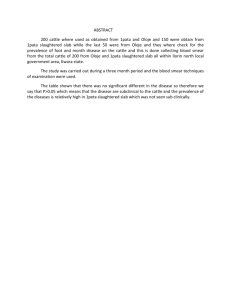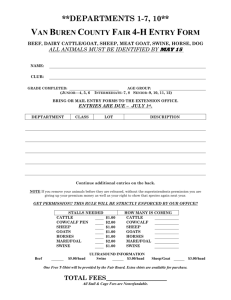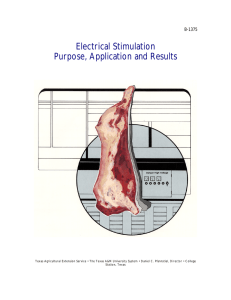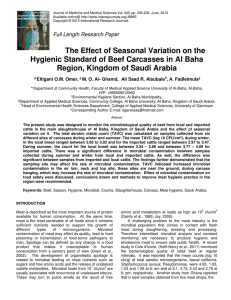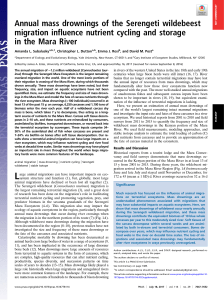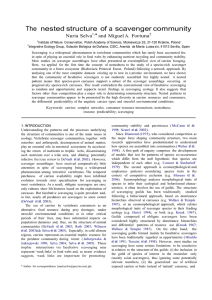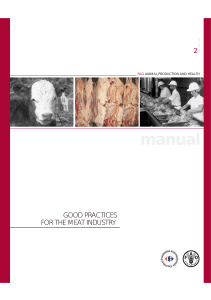T M I A
advertisement
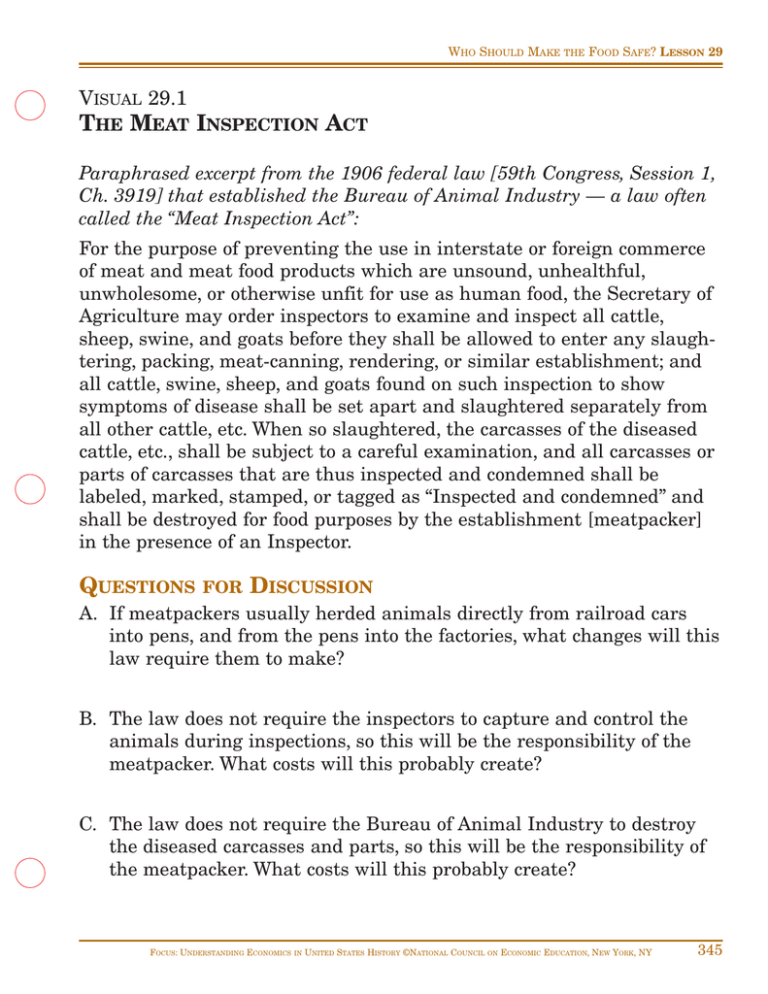
WHO SHOULD MAKE THE FOOD SAFE? LESSON 29 VISUAL 29.1 THE MEAT INSPECTION ACT Paraphrased excerpt from the 1906 federal law [59th Congress, Session 1, Ch. 3919] that established the Bureau of Animal Industry — a law often called the “Meat Inspection Act”: For the purpose of preventing the use in interstate or foreign commerce of meat and meat food products which are unsound, unhealthful, unwholesome, or otherwise unfit for use as human food, the Secretary of Agriculture may order inspectors to examine and inspect all cattle, sheep, swine, and goats before they shall be allowed to enter any slaughtering, packing, meat-canning, rendering, or similar establishment; and all cattle, swine, sheep, and goats found on such inspection to show symptoms of disease shall be set apart and slaughtered separately from all other cattle, etc. When so slaughtered, the carcasses of the diseased cattle, etc., shall be subject to a careful examination, and all carcasses or parts of carcasses that are thus inspected and condemned shall be labeled, marked, stamped, or tagged as “Inspected and condemned” and shall be destroyed for food purposes by the establishment [meatpacker] in the presence of an Inspector. QUESTIONS FOR DISCUSSION A. If meatpackers usually herded animals directly from railroad cars into pens, and from the pens into the factories, what changes will this law require them to make? B. The law does not require the inspectors to capture and control the animals during inspections, so this will be the responsibility of the meatpacker. What costs will this probably create? C. The law does not require the Bureau of Animal Industry to destroy the diseased carcasses and parts, so this will be the responsibility of the meatpacker. What costs will this probably create? FOCUS: UNDERSTANDING ECONOMICS IN UNITED STATES HISTORY ©NATIONAL COUNCIL ON ECONOMIC EDUCATION, NEW YORK, NY 345 LESSON 29 WHO SHOULD MAKE THE FOOD SAFE? VISUAL 29.2 CHANGES IN THE FOOD MARKET A new law requiring firms to spend money on costs they had not previously been paying for will cause a change in the market. Economists define this change as a shift in supply. Increased costs make it more expensive for producers to produce as much as they did before. Some producers drop out of the market because of the higher costs. The graph below shows how the new cost will affect the market if no other changes occur. Food Production Price of Food S2 (After law) S1 (Before law) P2 P1 Demand Q2 Q1 Quantity of Food QUESTIONS FOR DISCUSSION A. The supply curve changes from S1 to S2. What happened to the supply? B. How has the market-clearing price changed? C. How much food will be sold in the market after the price change? D. Will consumers have to pay more for their food after this law is passed? E. Will some firms have to reduce their production or drop out of the food production business? 346 FOCUS: UNDERSTANDING ECONOMICS IN UNITED STATES HISTORY ©NATIONAL COUNCIL ON ECONOMIC EDUCATION, NEW YORK, NY
